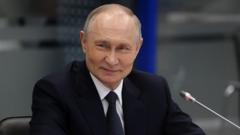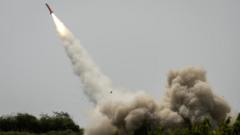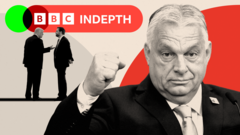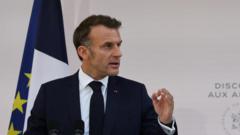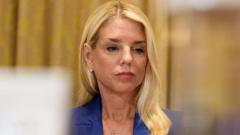In a bold stance, President Trump has declared that the US will provide Ukraine with advanced military weapons via NATO, coupled with a warning of significant tariffs against Russia's trade partners if peace negotiations fail.
**Trump's Ultimatum: New Weapons for Ukraine and Tariffs Against Russia**
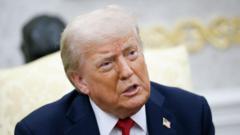
**Trump's Ultimatum: New Weapons for Ukraine and Tariffs Against Russia**
US President Donald Trump reveals a dual strategy of supplying advanced arms to Ukraine while threatening Russia with tariffs if no peace deal is struck within 50 days.
In an announcement made in Washington, President Trump expressed dissatisfaction with Russia's actions in Ukraine and vowed to support Kyiv with what he referred to as "top-of-the-line weapons." Following discussions with NATO chief Mark Rutte, Trump indicated that NATO countries would facilitate the supply of essential military resources to Ukraine, including missiles and much-needed air defense systems. While specifics on the types of weaponry were not disclosed, Trump assured that substantial resources amounting to billions of dollars would be delivered swiftly to the frontline.
Notably, Trump articulated a hardline approach towards Russia, threatening to implement a 100% secondary tariff on any nation that continues to engage in trade with Moscow if a peace settlement isn't achieved within a specified 50-day timeframe. This would impose considerable economic pressure on countries that trade with Russia, potentially crippling Moscow's revenue, which heavily relies on oil and gas exports.
Despite the stern declaration from Trump, the Moscow Stock Exchange saw a positive uptick, suggesting some investors may have anticipated further aggressive measures rather than tackling the issue with the anticipated harshness. Even as Trump criticized the nature of his communications with Putin, stating that pleasant dialogues were often followed by escalated attacks on Ukraine, he still implied that Ukraine shared some blame for the conflict's escalation since the full-scale invasion began in February 2022.
Meanwhile, Ukraine's President Zelensky met with the US envoy for support and expressed gratitude for Trump’s commitment to bolstering Ukraine's defense capabilities. As the situation remains fluid, the Kremlin's silence following the announcement may indicate a mixture of relief and skepticism regarding Trump's proposed measures, with some commentators suggesting these initiatives may amount to little more than posturing. With many uncertainties, geopolitical dynamics may shift noticeably over the next 50 days, both in the conflict and in international relations.
Notably, Trump articulated a hardline approach towards Russia, threatening to implement a 100% secondary tariff on any nation that continues to engage in trade with Moscow if a peace settlement isn't achieved within a specified 50-day timeframe. This would impose considerable economic pressure on countries that trade with Russia, potentially crippling Moscow's revenue, which heavily relies on oil and gas exports.
Despite the stern declaration from Trump, the Moscow Stock Exchange saw a positive uptick, suggesting some investors may have anticipated further aggressive measures rather than tackling the issue with the anticipated harshness. Even as Trump criticized the nature of his communications with Putin, stating that pleasant dialogues were often followed by escalated attacks on Ukraine, he still implied that Ukraine shared some blame for the conflict's escalation since the full-scale invasion began in February 2022.
Meanwhile, Ukraine's President Zelensky met with the US envoy for support and expressed gratitude for Trump’s commitment to bolstering Ukraine's defense capabilities. As the situation remains fluid, the Kremlin's silence following the announcement may indicate a mixture of relief and skepticism regarding Trump's proposed measures, with some commentators suggesting these initiatives may amount to little more than posturing. With many uncertainties, geopolitical dynamics may shift noticeably over the next 50 days, both in the conflict and in international relations.

